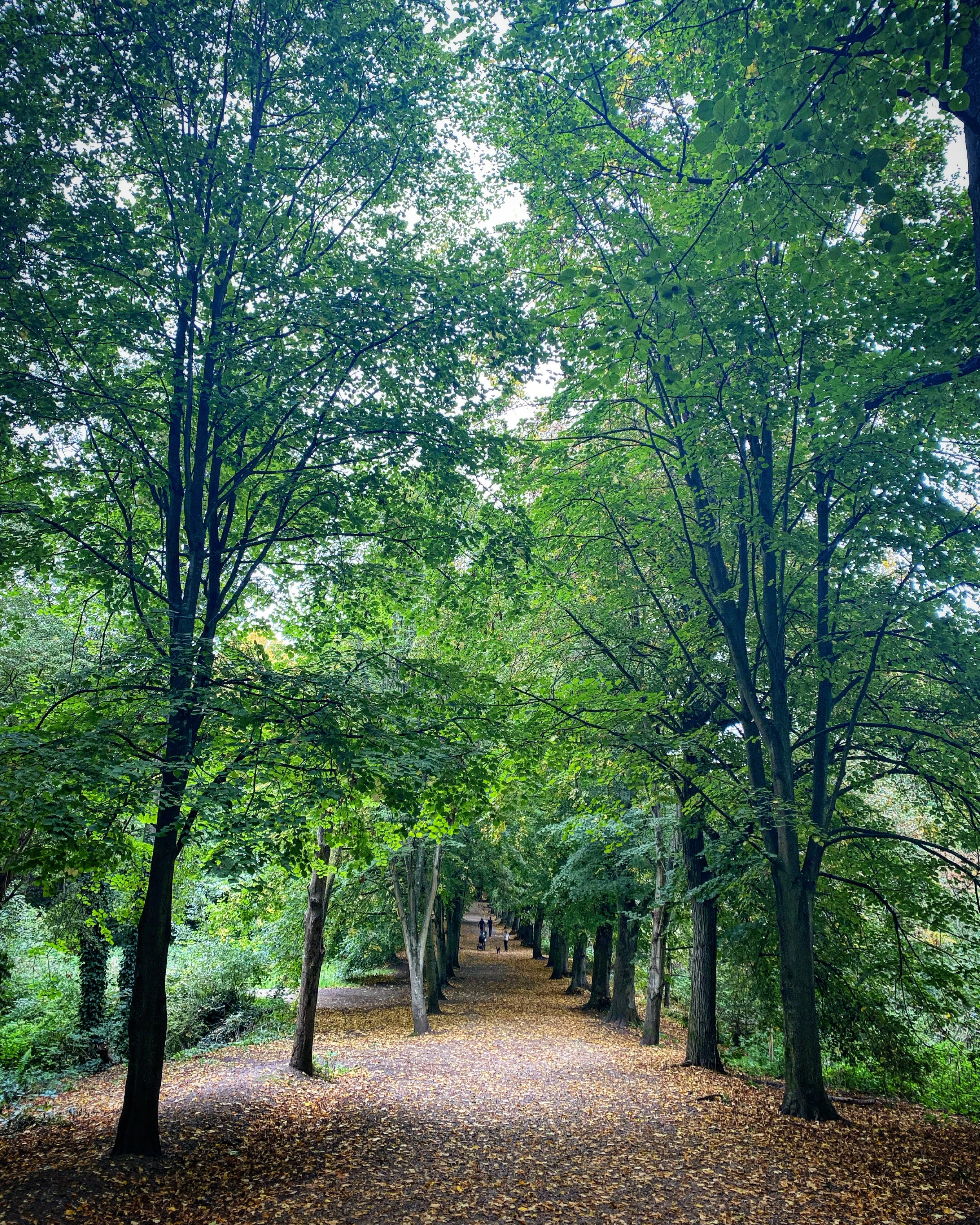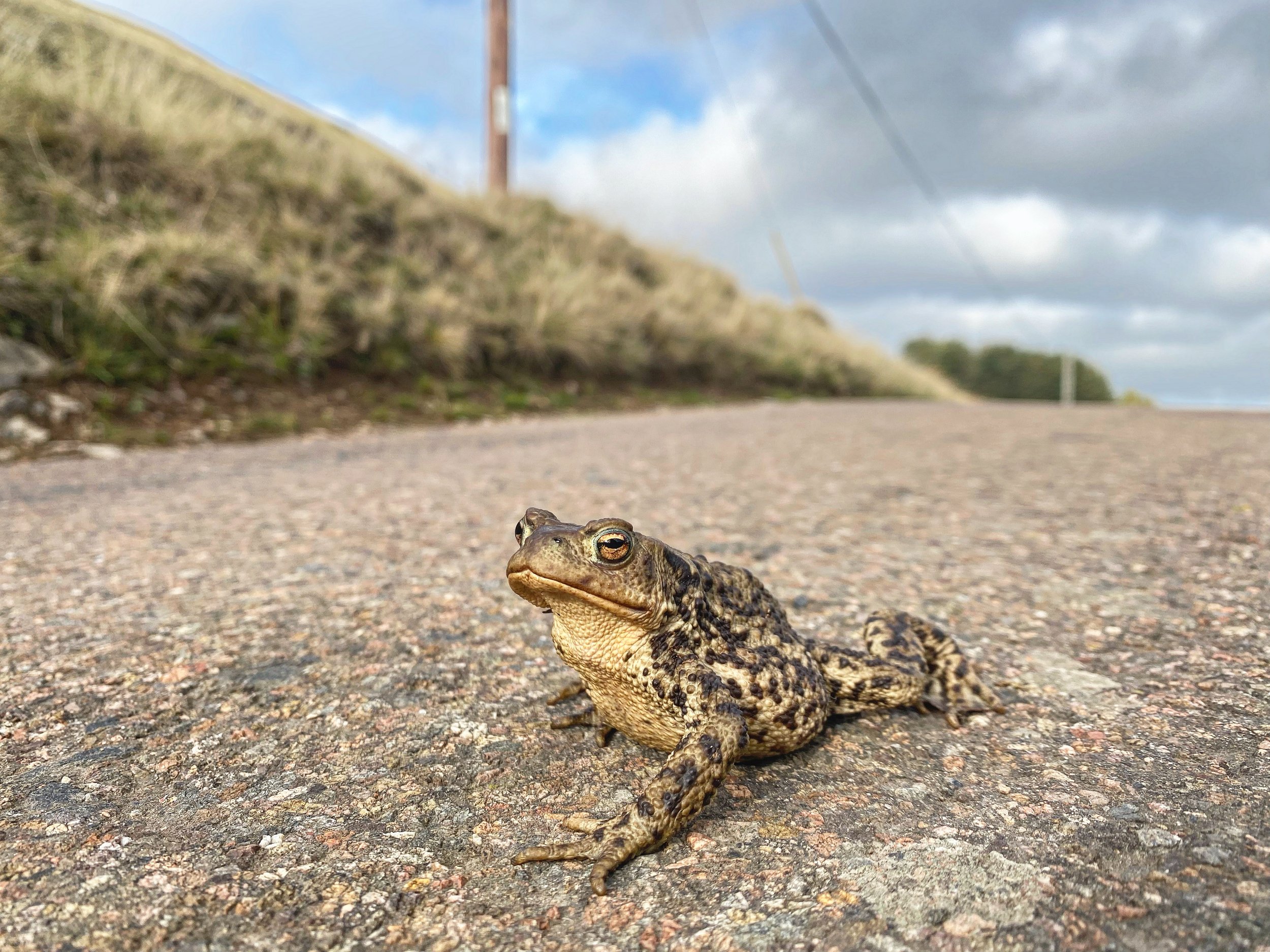The word cornucopia seems a particularly apt description for the sheer magnitude of autumn diversity that has burst onto the scene in recent weeks. My writing this month will swerve the stereotypical adjectives of this glorious season, and will instead hone in on the assemblage of phenomenal fungi that I have found, along with a couple of real periodic treasures of the fall - both of which were entirely unexpected encounters.
For the last month, the woods around our home have been alive at dusk with the folkloric calls of both male and female Tawny Owls. At this late stage in the. year, adult tawnies are pushing the younger birds out of their territories as encouragement to find their own. As the birds reach maturity, they become very noisy from October onwards ‘hooting and kee-wicking’ their way through the darkness. Owls in general are often depicted with a ‘twit-twoo’ sound and this can be likened to the calls of a male and female Tawny Owl, with the former projecting the ‘twoo’ and the latter providing the ‘twit’ or kee-wick sound.
Although Strix aluco is a woodland bird you can find them almost anywhere, mainly down to their impressive adaptability. Have a listen out after nightfall and you may be able to distinguish the sexes or even be lucky enough to peek their haunting silhouettes in the moonlight.
Recuperation.
The garden has been teeming with fungi fruiting bodies and in particular I have been chuffed to find Rufous Milkcaps, various inkcaps, Stump Puffballs, Parrot Waxcaps and Snowy Waxcaps all in high numbers along with the occasional Golden Spindle, bejewelling the lawn and giving it some much needed colour and interest.
Whilst at work it has been impossible not to be in constant ground surveillance mode. After such a hot and dry summer, the rains arrived and within days the terra firma and its fallen deadwood were reincarnated and transformed with Blushing Brackets, Birch and Oakbug Milkcaps, Shaggy Inkcaps, Slippery Jacks, Larch Boletes, Blushers and Parasols, the autumn classic - Fly Agaric and a new species for me, Common Fibre Vase.
But as usual, natures dramas tend to follow me around and as I was prepping my morning coffee this week, a tiny Coal Tit bounced off our kitchen window and landed on the ledge of one of our veg planters. As I went out to investigate, the significantly larger Great Tit swooped down, nudged the Coal Tit off the ledge and began to peck away at its still-stunned smaller relative. Competition for food seems fierce at the moment but after warming up in my hand for a couple of minutes, she was off.
Blushing Bracket (Daedaleopsis confragosa) growing on fallen birch.
Birch Milkcaps (Lactarius tabidus).
Fly Agaric (Amanita muscaria).
Common Fibre Vase (Thelephora terrestris).
A little travelling was on the cards in October, with a train ride to Paris to visit friends which was preceded by a day in London and a lovely walk around Hampstead Heath gawping at the awe-inspiring ancient trees and their fallen fruits. This is simply a special time of year to explore the outdoors and even in dominating urban sprawls like Paris and London, you can still fall under the spell of natures enchantment.
Hampstead Heath, London. Early autumn.
A fiery London Plane leaf.
Jardin du Luxembourg, Paris.
An autumnal symphony in Paris.
Back up north and an amble around the College Valley in Northumberland proved to be a supreme site for more scatterings of spellbinding fungi. Passing a rather blasé female toad on the way through the valley walk, we happened upon a plethora of mushrooms with the odd supernatural slime mould thrown in for good measure. Dog Sick Slime Mould (Mucilago crustacea) in particular (yes, you heard correctly) was an interesting one for sure. I have spotted its more yellowish counterpart Dogs Vomit Slime Mould (Fuligo septica) before, but not this one. And it was everywhere. Not a lot is known about these primitive, single-celled organisms and they are about as weird as it gets. In Scandinavian folklore, Fuligo septica is identified as the vomit of troll cats, and in Latvia - witches spit. You can guarantee that anything weird looking in the natural world will have some good folklore attached to it.
Wandering further, I discovered another species of slime mould, this time the raspberry version. Again, a first record for me and one which was an instant favourite due to its vibrant colouration and general eccentricity. Add to that - a giant Penny Bun, Meadow Waxcaps and Witches’ Butter fungus and I’d call that a successful daytrip already.
Raspberry Slime Mould (Tubifera ferruginosa).
Dog Sick Slime Mould (Mucilago crustacea).
Common Toad. Entirely disinterested in our presence.
A huge Penny Bun (Boletus edulis).
Witches’ Butter growing on Gorse (Tremella mesenterica).
Meadow Waxcap. (Cuphophyllus pratensis).
A majestic pine.
However, we weren’t done yet.
Meandering along the College Burn to Hethpool Linn, one of natures true seasonal spectacles was taking place down below in the gorge. Hundreds of leaping salmon and sea trout were attempting an almost unthinkable lunge up through the thundering burn in full spate. Of course, they do this to reach the site of their birthplace in order to spawn and they do this at the same time, every year. What we witnessed in the burn was the last stage of a tumultuous migration that these incredibly determined animals had made from their feeding grounds in Atlantic water all the way back to their home river, like a natural homing missile.
Hethpool Linn, College Valley, Northumberland.
I’d always wanted to see it. It had always eluded me until now. The video doesn’t do it justice but I can honestly say it was totally transfixing. I only hope some of them made it!
The final autumn adventure was in the form of a weekend trip to the Lake District. The theme continued and sightings of Porcelain Fungi, Smoky Polypore and Common Earthball’s were most welcome. Spangle Galls were ever present on the underside of oak leaves. Tiny little growths produced by a female Common Spangle Gall Wasp laying her eggs in the living leaf tissues of the tree, with the subsequent larvae hatching in the spring.
From Grasmere, we walked to Nicholas Wood, and it was here that we were startled by one of our most enigmatic and beloved native mammals.
Nicholas Wood. It was obviously going to be decent.
Common Earthball (Scleroderma citrinum) on the woodland floor.
Whilst they look similar to puff balls (usually edible), earth balls are toxic and have a black interior.
Smoky Polypore (Bjerkandera adusta). A great scientific name I might add.
The galls of the Common Spangle Gall Wasp (Neuroterus quercusbaccarum). Adults are rarely seen.
The glistening remains of Porcelain fungus (Oudemansiella mucida).
Their presence in the area is no secret, but with their increasing rarity and vulnerability, you just don’t really ever expect to see one. Let alone bound around in front of you. At the entrance to the wood, a Red Squirrel leapt over the dry stone wall and into the safe haven of oak and beech. That fleeting glimpse in itself would have been adequate, but to go on to see five in total was a remarkable bonus.
I may have been without camera, but to be able to follow them through the trees, looking on as they cached supplies of nuts and mushrooms for the winter was an amazing privilege. One which I hope will not disappear in the future because without them, natures rich tapestry will be significantly less so.
Naturally though, as I revisited the same spot the next day with my camera and all its lenses I didn’t see a single rusty red guise of the precious Sciurus vulgaris.
Wildlife is never predictable. And that is exactly how it maintains its wonder.



























